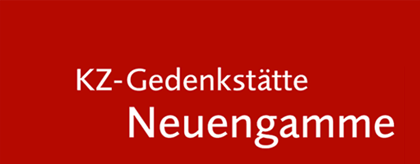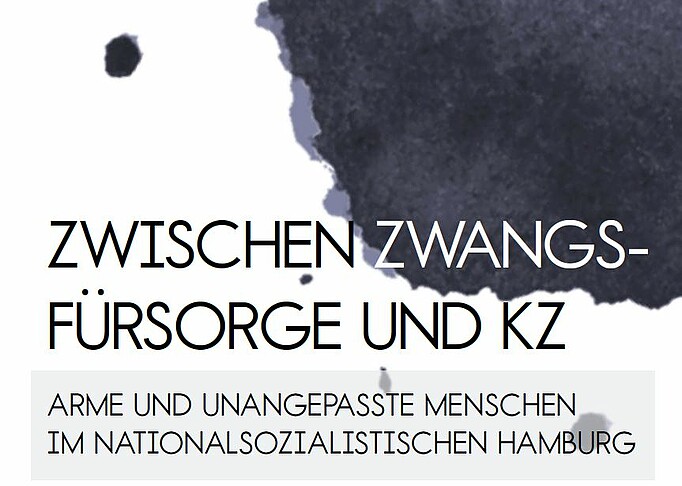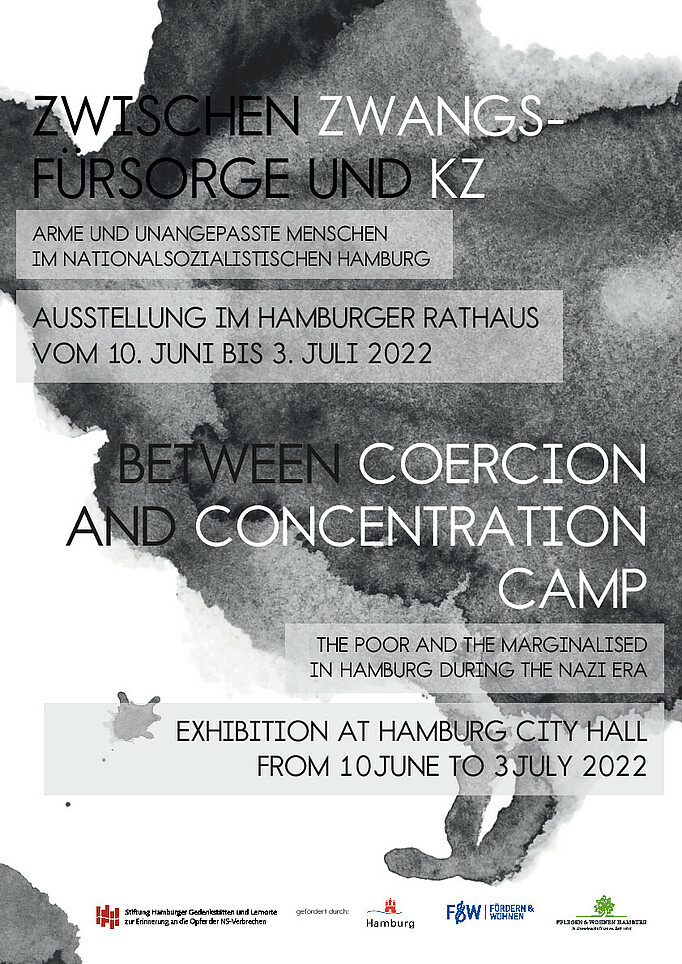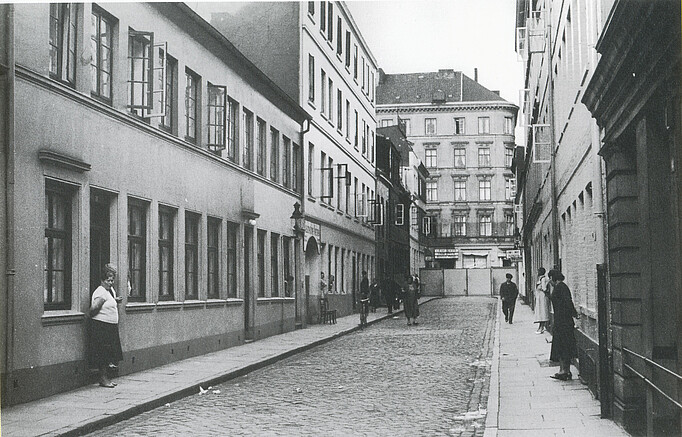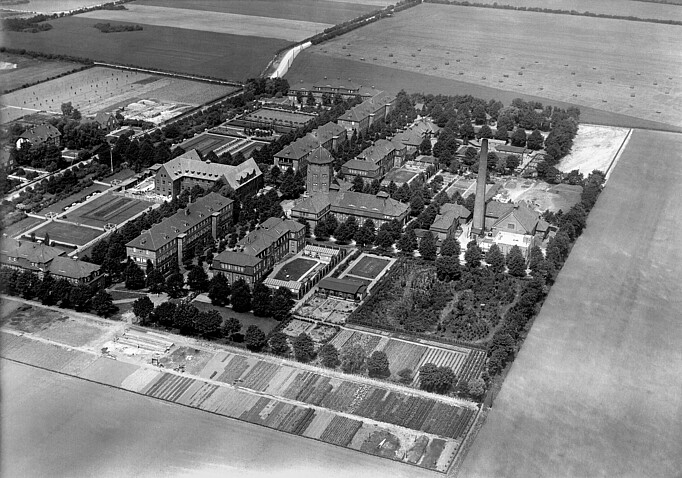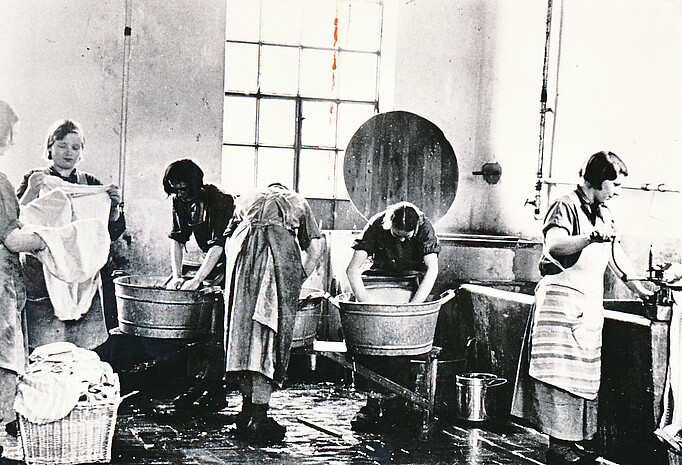05/11/2022 Exhibition
Exhibition ‘Between Coercion and Concentration Camp. The Poor and the Marginalised in Hamburg during the Nazi Era’
From June 10 to July 3 the Foundation of Hamburg Memorials and Learning Centres Commemorating the Victims of Nazi Crimes is showing its new touring exhibition ‘Between Coercion and Concentration Camp. The Poor and the Marginalised in Hamburg during the Nazi Era’ at Hamburg City Hall. The exhibition will be complemented by an extensive accompanying programme of lectures, readings, theatre performances and tours throughout the city on the subject of persecution for socio-racist reasons.
June 10 sees the official opening of the new touring exhibition entitled ‘Between Coercion and Concentration Camp. The Poor and the Marginalised in Hamburg during the Nazi Era’ by the Foundation of Hamburg Memorials and Learning Centres at Hamburg City Hall. It tells the story of the many hundreds of Hamburg citizens who were stigmatised, marginalised and persecuted as Asoziale, or ‘anti-social elements’, during the Nazi era. Such persecution for socio-racist grounds particularly affected those who were living in poverty and were socially maladjusted, people whose way of life did not fit into the National Socialist Volksgemeinschaft or ‘national community’. In keeping with Nazi ideology, the welfare authorities made a distinction among the persons in its care between those deserving of support and assistance for no fault of their own, who were entitled to welfare and social benefits, and ‘inferior elements’, who were made to feel the full force of the persecution apparatus. Among those affected were beggars, wayfarers, the unemployed, alcoholics, persons with STDs, prostitutes and women suspected of prostitution. They were threatened with incapacitation, forced sterilisation and committal to welfare institutions.
In persecuting this group of people, welfare institutions worked closely with municipal institutions, local offices and the authorities. Under the provisions of the ‘Fundamental Decree on Preventive Crime Control’ implemented in December 1937 the police in particular were given far-reaching powers. They had the authority to take into so-called ‘preventive custody’ any persons who supposedly posed a threat to the general public through allegedly anti-social behaviour, and could do so without trial and for an indeterminate period of time. In several waves of arrests throughout the Reich, the police sent tens of thousands of people to concentration camps, where they were subsequently identified as ‘anti-social elements’ by means of a black cloth patch affixed to their prisoner’s uniforms. Who or what was deemed ‘anti-social behaviour’ was entirely at the police’s discretion.
Many of those affected remained incapacitated after the end of the war and were compelled to remain in closed institutions. They were not recognised as victims of Nazi persecution. They were not entitled to welfare benefits or compensation. And it was not until January 2020 that the German Bundestag officially recognised as victims of Nazi persecution those who had been persecuted as ‘anti-social elements’. By that time, very few of those persecutees were still alive.
The opening of the exhibition curated by Frauke Steinhäuser in collaboration with Alyn Bessmann and Lennart Onken had originally been scheduled for January, to coincide with the Remembrance Day for Victims of National Socialism. Following its postponement due to the pandemic, it will now be shown in the main hallway of Hamburg City Hall from June 10 to July 3. The Foundation of Hamburg Memorials and Learning Centres Commemorating the Victims of Nazi Crimes has also drawn up an extensive accompanying programme
Opening hours:
June 10 to July 3
Monday to Friday, 7 am to 7 pm
Saturday and Sunday, 10 am to 5 pm
(Please note: Special events held at City Hall may result in the temporary closure of the exhibition.)
Visitor services and catalogue sales:
Monday to Friday, 10 am to 6 pm
Saturday and Sunday, 10 am to 2 pm
